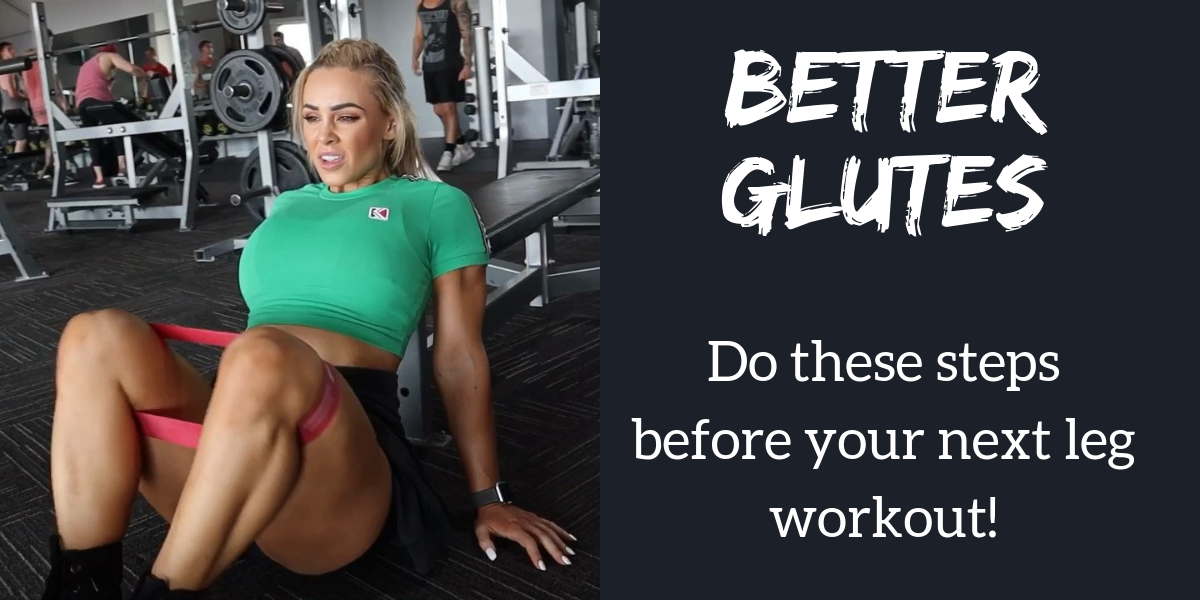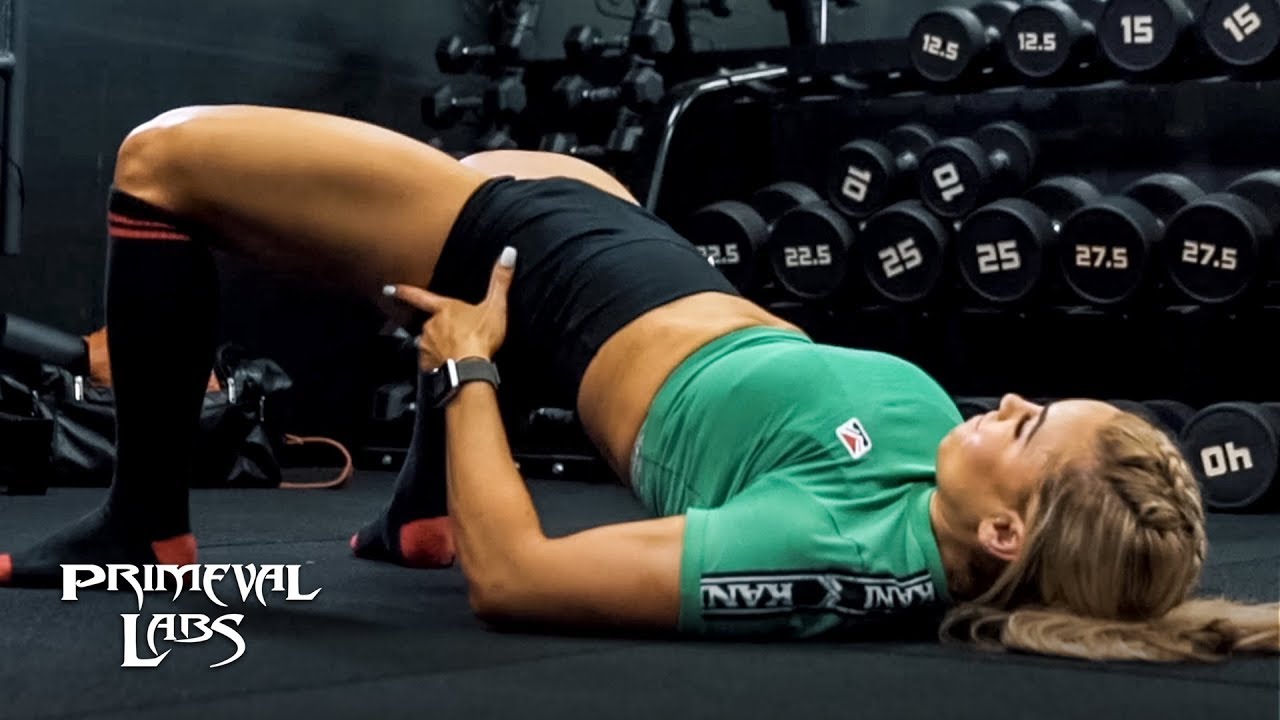Glute training is all the rage these days, and not just with female lifters. Guys are joining the girls doing hip thrusts, glute bridges, and sumo deadlifts.
And when you step back and think about it, prioritizing glute training makes sense.
Strong, powerful glutes not only make you look better, they also help increase multiple aspects of athleticism, including strength, power, explosiveness and speed.
Simply put, if you have not been including some form of direct glute training in your weekly workouts, you’re neglecting one of the most important muscle groups in your body.
Use these tips and workouts to build bigger, stronger, more shapely glutes the next time you hit the gym.
Try These with the Workout!
7 Tips for Better Glutes
Embrace High-Frequency Training
Generally speaking, glutes respond best to high frequency training. The glutes are one of the most powerful muscle groups in the body, and just like other major body parts training them once per week isn’t good enough for the average lifter.
At a bare minimum, you should perform some type of low-to-moderate intensity glute activation exercise every day. Not only will this help you recruit your glutes better during training, but it will also ensure you’re glutes are properly activated in whatever else you’re doing.
Having weak glutes is associated with low back pain, knee pain, and a number of other nagging aches and pains.
By training them more frequently, you will make them bigger, stronger, and tighter all while helping fortify your body from common ailments nagging the gen pop.
Bodyweight bridges, single-leg bridges, clams, bird dogs, and single-leg Romanian deadlifts are just a few of the exercises you can use as part of your daily glute activation practice.
Spending as little as five minutes a day on this can lead to dramatic increases in how your glutes look, feel, and perform.
Build the Mind-Muscle Connection
When you want to bring up a lagging body part, you need to choose exercises that allow you to actually feel the muscle that you’re trying to work. And, equally important, is choosing a weight that allows you to feel the muscle working through the entire range of motion.
You don’t establish a strong mind-muscle connection loading up the weight and performing sloppy reps.
Choose an exercise and weight that you could hold a peak isometric contraction and become very good at it.
This is how you develop a robust mind-muscle connection.
If you’ve struggled to feel your glutes working in many of your leg training sessions, you need to reinforce the mind-muscle connection by creating strong peak contractions over and over again in your workouts.
These next few tips will help you do just that.
Pre-Exhaust
Pre-exhaust is a training technique used by lifters to improve the mind-muscle connection with a particular muscle group that they might not feel working during a compound exercise. This also helps ensure the right muscles are working during your compound movements because the pre-exhaust technique helps stimulate the dormant, sluggish muscle, which translates to better form in your training.
Additionally, pre-exhaust also serves as a way to increase training volume on a specific muscle group and help tires it out, which is ideal for those whose main goal is hypertrophy.
To perform a pre-exhaust, pick an isolation exercise that focuses on the muscle group you are having trouble “feeling” during the compound exercise and perform 2-3 sets of the isolation exercise before hitting your compound movements.
In the case of glute, you would want to perform glute bridges and/or lateral band walks before heading into your compound lifts such as hip thrusts, squats, or deadlifts.
Make Friends with the Mini-Band
Building on the previous points of pre-exhaust and establishing the mind-muscle connection, one of the best ways to accomplish both of these with respect to the glutes is the incorporation of mini-band work at the beginning of your lower body workouts.
Mini-band exercises can also be used at the end of your workouts as a type of high-rep finisher were you accumulate a lot of metabolic stress, which is one of the three main mechanisms that drive muscle growth.
Most lifters tend to focus on lifting heavier weights (mechanical tension) or creating a lot of muscle damage in their workouts, yet ignore metabolite training. Make no mistake mechanical tension is absolutely needed for muscle growth, but that doesn’t mean there shouldn’t be at least some lighter weight, higher rep metabolite work in your programming.
The combination of high reps, constant tension, and short rest periods create a metabolic maelstrom in your body which increases blood flow, pumps, and muscle growth.
One of our favorite high-rep glute finishers comes by way of “The Glute Guy”, Dr. Bret Contreras:
Perform that circuit 3 times with about 1 minute of rest between each round and your glutes will be on FIRE!
Squat...A Lot!
It seems there’s no problem a steady diet of squatting can’t fix.
Want bigger legs? Squat
Want to build total body strength? Squat
Want to look better in and out of clothes? Squat
Simply put, if you want a stronger, tighter backside, then you must squat. There’s no way around it.
Yes, glute kickbacks, hip thrusts, and mini-band work has its place, but at the end of the day, you still need to squat.
As an added bonus, in addition to building better glutes, you’ll also increase the size and strength of your quads!
Isometric Holds
We’ve touched on the idea of holding isometric peak contractions as a way to foster a stronger mind-muscle connection. But they can also serve as another method to burnout the glutes, increase time under tension, builds strength, create metabolic stress, and induce new growth.
On the last rep of your last set of a glute-centric exercise, such as the hip thrust, banded hip abductions, or single-leg glute bridge, hold the peak contraction for as long as possible. Aside from the size gain, you’re also building strength strength in the hardest position of the exercise which will pay dividends towards your performance in future workouts.
Use a High-Box for Step Ups
The step-up is a classic accessory movement to build the legs. Typically it’s performed on a box that is roughly knee height. Using a knee-high box tends to emphasize the quads more than the glutes (though both are activated to a certain extent).
To transform the step up into a more glute-focused exercise, use a taller box. Research shows that higher platform heights lead to greater glute muscle activity.[1] Just be cautious with selecting your box height, as going to high can lead to cheating and a breakdown in form.
The Best Workout for Better Glutes
| Glute Workout A | ||
| Exercise | Sets | Reps |
| Kettlebell Swing | 3 |
15 |
| Hip Thrust | 4 | 12/10/8/6 |
| High-Box Step Ups | 3 | 10-12/leg |
| Leg Curl | 2 | 12-15 |
| Glute Workout B | ||
| Exercise | Sets | Reps |
| Bodyweight Reverse Lunges | 3 | 20 / leg |
| Paused Squats | 3 | 8-10 |
| Dumbbell RDL | 3 | 8-10 |
| Sumo Goblet Squats | 3 | 12-15 |
Preparing for Leg (Glute) Day Workouts
Leg workouts are tough...really tough.
To make the most of your lower body training sessions, you need to attack the gym with reckless abandon and have your mind and body focused on one singular goal -- demolition of the lower body musculature.
To get yourself prepared for the workout, we recommend a solid pre-workout that offers nutrients to fuel your mind and muscles to perform at their best.
Our choice is Mega Pre Red.
Leg workouts can also last longer due to the increased rest that’s required between your max effort sets. To keep your body fueled during training and prevent excessive muscle breakdown, we recommend consuming Intracell 7 Black.
Intracell 7 Black supplies valuable carbohydrates, essential amino acids, and blood flow enhancers to keep your training output high all workout long.
After training, you need protein to repair the damage you’ve and kickstart the growth process. ISOLIT is the go-to post workout protein of choice. Each serving supplies 25 grams of high-quality whey protein isolate to nourish your muscles and provide them with the building blocks they need to grow bigger and stronger.
References
- Macadam, P., Cronin, J., & Contreras, B. (2015). An examination of the gluteal muscle activity associated with dynamic hip abduction and hip external rotation exercise: a systematic review. International Journal of Sports Physical Therapy, 10(5), 573.










Leave a comment
This site is protected by hCaptcha and the hCaptcha Privacy Policy and Terms of Service apply.